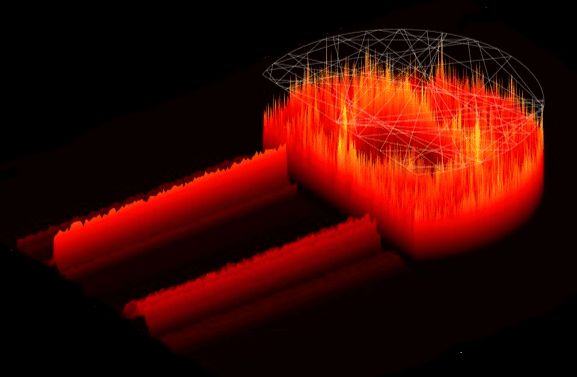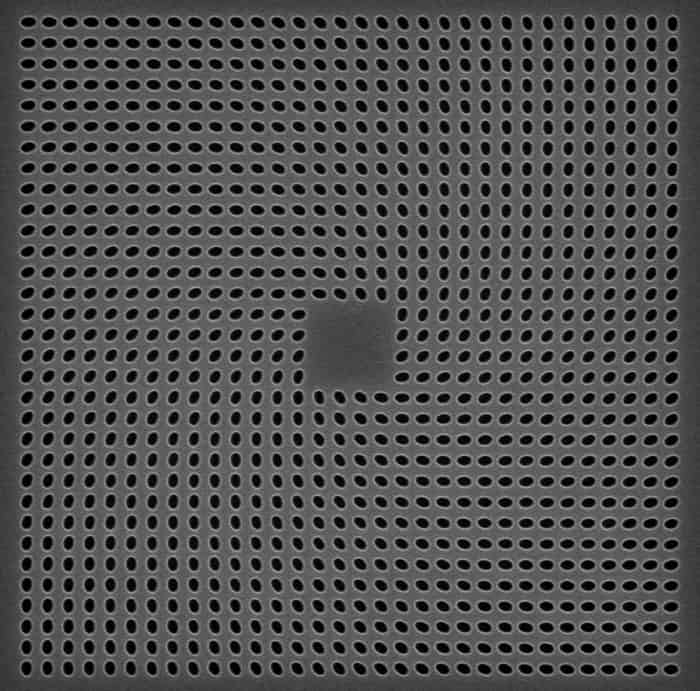
Unwanted fluctuations in the output of high-power lasers can be reduced by using a laser cavity that allows light to bounce around chaotically. That is the counterintuitive conclusion of scientists in the US, UK and Singapore, whose research could also boost our understanding of weather patterns and turbulent fluid dynamics.
High-power lasers have an immense range of applications, from materials processing to surgery, but keeping light emission stable is difficult. Complex non-linear interactions of a laser’s active medium with the light field can lead to chaotic fluctuations that degrade its output and reduce its usefulness. Researchers have tried to suppress these fluctuations, but this can restrict the laser’s power.
An ideal laser would transmit all its power at a single frequency, with all its wavefronts perfectly parallel. In reality, however, the desired longitudinal modes in a traditionally-shaped laser cavity inevitably excite transverse modes as well.
Making waves
“It’s like a ship propagating through water,” explains Ortwin Hess, a theoretician at Imperial College London specializing in quantum nanophotonics: “You’ve got waves pushed in front of it and waves pushed aside created in the wake.”
Narrow laser cavities supporting only one transverse mode generally remain stable. High-power lasers, however, require large laser cavities and, within these, multiple transverse modes can pile up, leading rapidly to chaotic fluctuations in the light output.
Attempts to tame these fluctuations have focused on suppressing these multiple transverse modes to make the cavity field resemble that of a small laser. Such strategies can be moderately successful, says Hess, but the cavities remain inherently unstable.
“The characteristic thing about a semiconductor laser is that, within the semiconductor active material, light and matter interact quite intimately,” explains Hess. “It’s a bit like the light changing the viscosity of a very viscous fluid while propagating through it.” Injecting a stable control pulse, for example, may successfully suppress the multiple transverse modes at one pumping current, but increasing the current further may cause them to reappear.
Sweeping-up instabilities
In the new research, Hess and his colleagues at Imperial joined forces with researchers at Yale University and Nanyang Technical University in Singapore. The team took the opposite approach and maximized the number of modes in a semiconductor laser. They produced a D-shaped cavity without longitudinal or transverse modes. Instead, light bounced around chaotically. The fluctuations in the properties of the semiconductor were therefore effectively random and below the scale of the wavelength. This prevented large-scale instabilities from forming, sweeping-up instabilities from the light field and spreading throughout the laser.
Amazingly, this resulted in a laser cavity that, macroscopically, was inherently stable independent of pump power and could emit light at multiple frequencies simultaneously without its output succumbing to unstable fluctuations.
“We don’t have to inject anything,” says laser physicist Hui Cao, who led the Yale group. She adds, “Instead, we design the cavity shape to eliminate instabilities.” Hess compares this approach of stability through sub-wavelength chaos to the reduced likelihood of tornadoes to form in hilly regions than over flat country.
Focus on industry
Some issues remain, however. Although the laser’s output profile is highly stable, its beam cannot yet be very tightly focused. Cao says this is not necessarily a problem for applications such as machining and material processing: “For those applications, what’s important is to produce a particular beam profile”. She adds, “People have used a Gaussian beam shape and converted it to a line, a square or a triangle because they want to write that pattern onto their device. They do not require very good spatial coherence because the shape is larger than the diffraction limit, and relatively broad bandwidth is also not a big issue. What they do need is the intensity and beam-shape stability.”

New laser creates a swirling vortex of light
The researchers believe their cavity design should be applicable to many laser types, which can all suffer from similar instabilities at high powers. Beyond this, they believe there could be applications to the study of chaotic and unstable behaviour in other systems: “We’re trying to reach out to other communities to see whether our scheme could be used to suppress spatio-temporal instabilities in other non-linear wave dynamic systems,” says Cao. “Fundamentally the equations are the same.”
“Random or chaotic resonators has been an active field for some time in optics and photonics, but it was mostly fundamental research,” says semiconductor physicist Alessandro Tredicucci of University of Pisa in Italy. “This is clearly a situation in which a chaotic cavity has some potential benefits over a conventional laser cavity.” He cautions, however, that “You have to put more power in to get all these modes lasing at the same time, which lowers the efficiency and means that typically these chaotic lasers have lower performance than conventional ones.”
The research is described in Science.


